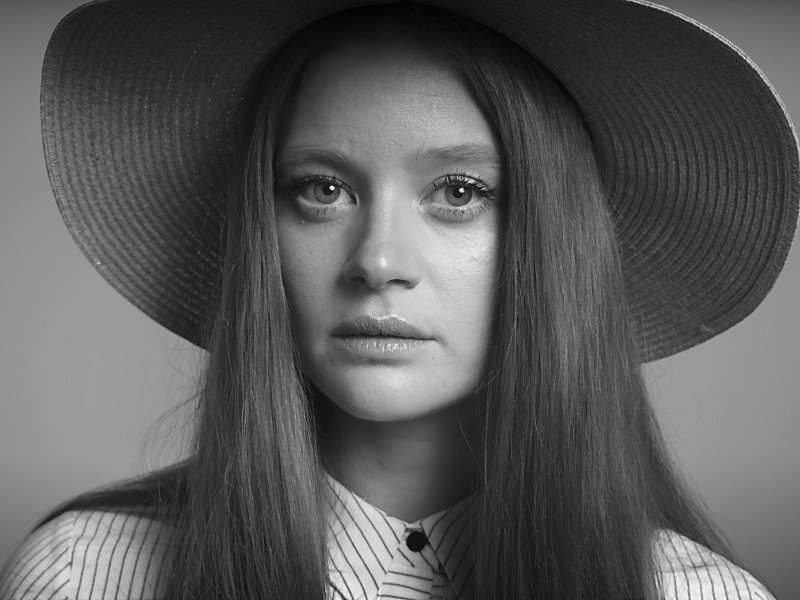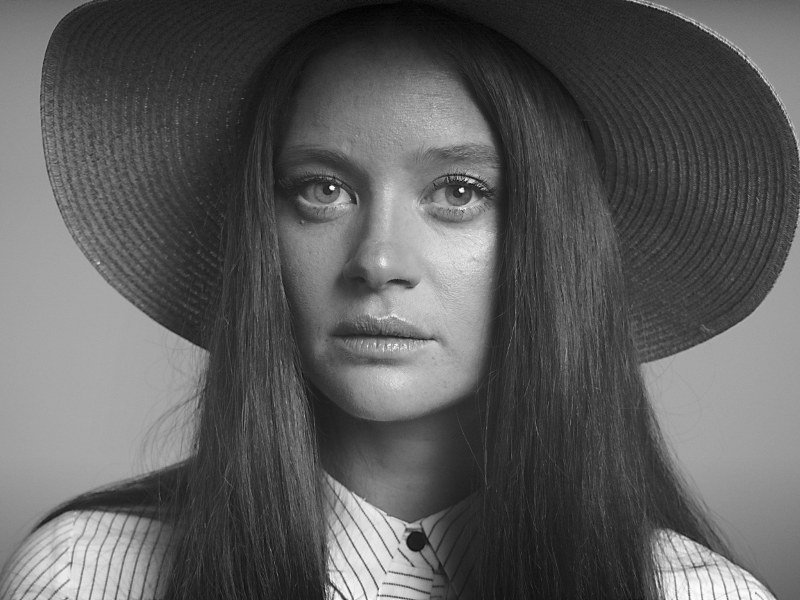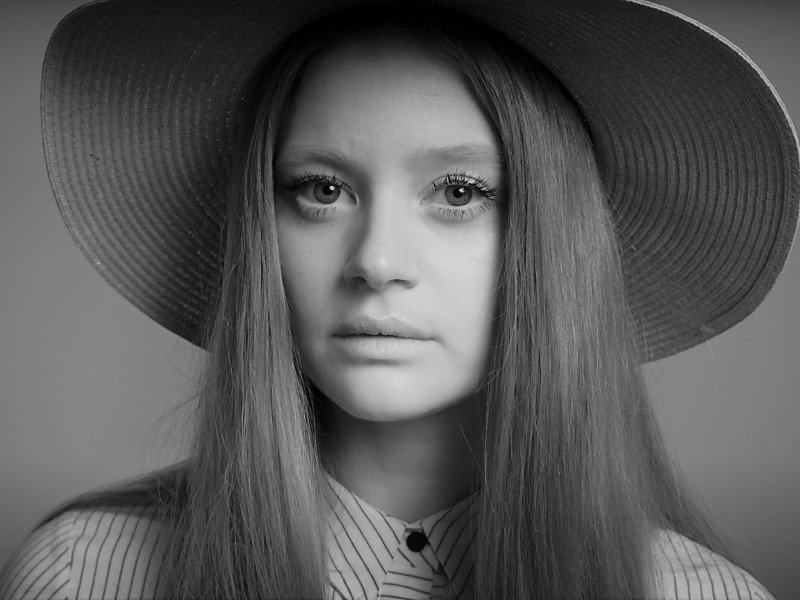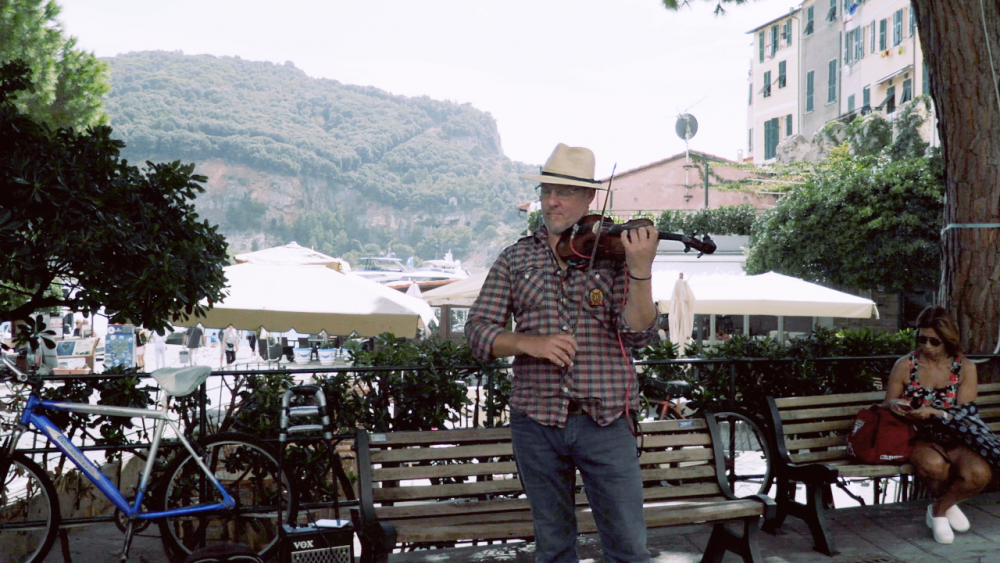-
Posts
1,151 -
Joined
-
Last visited
Content Type
Profiles
Forums
Articles
Everything posted by tupp
-
Probably not. As I said, I don't use LUTs, and the Acros profiles are actually types of LUTs. Nothing beats the eye of a versatile, experienced color grader. A LUT is limited in regards to what shots it can make look good. A LUT designed for high key won't work with a low key shot, and vice versa. Also, a single LUT is limited to a single look -- not so with a good color grader. However, the main advantage that I argue is having all three color channels available when finishing in black & white. I am not particularly dismissing Acros as a baked-in look. I am saying that, in general, it severely limits one's options to commit to recording black & white camera files from a color camera. It doesn't matter if one records with the Acros profile, with some other internal black & white LUT or with an "inside straight. " I strongly disagree. Again, by having control of all three color channels in post, one has many more options. With the Acros profile (or with any other in-camera black & white profile), one is largely stuck with the way it looks. It might look good in many cases, but so do the results of a good color grader. A black & white LUT such as Acros can't handle all capture contrast ranges and exposure problems the way a good color grader can with all three color channels available. I dispute that. Again, I am not talking about a LUT. I just looked at some Acros footage, and I have no doubt that a good color grader with access to all three color channels can make the images look just as good (and mostly better) than Acros. Below is a quick and dirty examples of the dramatically different looks possible by having control of all three color channels: Both images are from the same color photo. All I did was change the relative intensity of the three color channels (and then adjust the overall contrast accordingly). One sacrifices such control of the look when one records black and white camera files with a color camera. By the way, here is what the black & white image looks like with a decently even balance between the three color channels:
-
I don't know what Acros is, but what I suggested has nothing to do with LUTs. I never use LUTs unless an untrained client is on set. I like to have maximum control of the grade (or see to it that the hired color grader has maximum control). It's not conceit, but experience that tells me it is generally better to leave one's options open. Acros sounds like it bakes-in a look and one would be mostly stuck with that look as the result would be black & white. Having all three color channels to work with and to adjust separately gives a lot of versatility in the grade to black & white. After having done it several times, I would never commit to an in-camera conversion to black & white.
-
I don't know anything about those Fuji cameras nor about how they render in their "black & white mode," but it generally gives more control and versatility to shoot color images and then "grade" them into black & white. Merely adjusting the relative brightness of the three color channels can yield a variety of skin tone looks. If you know that you will be finishing in black & white, you don't have to white balance when shooting. However, if your camera records compressed files, the closer the color balance is to neutral, the more data one has to work with when grading the color images to black & white, and the less likely that one will encounter noise (with proper exposure).
-
Or, instead of a cage with a locking pin, just go with a less expensive, delicate HDMI gimbal cable with a right-angle micro-HDMI connector: You could can strain-relieve such flimsy, flat cables with gaffers tape or paper tape.
-
Thanks for the link! Okay. So, this is an interesting approach! RGBW sensors have appeared before, but not in this arrangement. A 6x6 cell seems a little unwieldy and complex -- there was nothing wrong with the simple 3x1 RGB sensor on the Sony F35. However, if Blackmagic made the filter work and if the results are good, I would like to try it. I just wish that they would offer this type of sensor in a lower resolution, on a less expensive and more versatile camera body.
-

Blackmagic casually announces 12K URSA Mini Pro Camera
tupp replied to Andrew Reid's topic in Cameras
Newsflash: Rich patent troll defeats underfunded but justified plaintiff in US patent court! -

Blackmagic casually announces 12K URSA Mini Pro Camera
tupp replied to Andrew Reid's topic in Cameras
Me, too... like perhaps a shallow lens mount -- is that too much to ask? Some try to stand out from the rest of the pack with unique images. Such individuals value the versatility to be able to use a variety of shallow-mount lenses and shallow-mount creative adapters. Built-in NDs that prevent shallow mounts are not useful when one needs such versatility. Besides, there are plenty of adapters with built-in NDs that can be used on shallow-mount cameras. -
Does Blackmagic actually claim that the sensor uses an RGB filter? Also, if it is an RGB filter, wouldn't the matrix be 3x1 (but staggered?) -- similar to a striped RGB filters that we've seen on CCD sensors? If Blackmagic doesn't state that they are actually using an RGB filter, I suspect that they are doing a low level "twist" on a Bayer filter and using creative marketing.
-

Blackmagic casually announces 12K URSA Mini Pro Camera
tupp replied to Andrew Reid's topic in Cameras
Plus, the RED patent is weak. There is plenty of prior art in regards to wavelet compression of video. -
I have the E-M10 III. I love it, and it has a few advantages (and disadvantages) compared to the GX85. However, if I didn't have the E-M10 III nor any lenses, I would seriously consider this US$498 GX85 bundle with 12-32mm and 45-150mm lenses.
-

Blackmagic casually announces 12K URSA Mini Pro Camera
tupp replied to Andrew Reid's topic in Cameras
12k? Meh... I'll keep using my Forza 18K camera from 2014. The resolution and frame rates do absolutely nothing for me. On the other hand, if this camera is using a striped RGB CMOS sensor, that IS notable! The striped RGB CCD sensors always looked good, especially on the Sony S35. Does anyone see where Blackmagic states that the camera actually utilizes a striped RGB filter on the sensor? I suspect that they are being creative with their claims here, and could be using a Bayer filter with a twist on the low-level RGB conversion the A-D converter. -
Press release here. I've never even tried H.265!
-
On one feature I shot, we used a "Snow White"-themed rolling case, very similar to this: We put in a little padding in it, and it was very convenient in carrying the fully built camera. When we wanted the camera on set, we would call, "'Princess Case' on set!" When shooting in crowds, we could walk a fair distance away from the case, and nobody bothered it.
-
I am primarily concerned about the risk of losing your camera and more so about the hazard that the rig poses for motorists behind the hero vehicle. At minimum, replace the open hooks with strong carabiners or with removable chain links. The top carabiner needs to completely encompass that runner on the luggage rack, so that it cannot fall off during a bounce. In addition, to prevent the bounce/wobble, solidity could be added with two extra ratchet straps (or motorcycle straps) -- one strap tensioned between the camera platform and to the top of the car and the other strap tensioned between the camera platform and the bottom of the car. These extra straps would also increase safety.
-
Not familiar with Glidecam (as much as Steadicam), but there has to be a Glidecam model with enough capacity for a Sony F3. Be aware that Steadicam-style stabilizers are not something that the typical gimbal-kiddie can just pick up and instantly start shooting -- it takes a bit of practice and training. The best Steadicam operators have years of experience. On the other hand, I would bet that gimbals exist that could hold an F3 with an FD prime. I see two alarming problems with the rig pictured: That tag line with the hooks should be replaced with a solid strut (or, even better, two "triangulated" struts). Every significant bump will cause the camera to bounce up and down (ruining that part of the take). There is no backup "safety" portion of the rig -- a rig that uses suction cups and a tag line with open hooks. With each bounce, there is a possibility that one of those open hooks could fall off of its pick point, and if that happens, "that's all she wrote" for the camera (and possibly for a motorcyclist following the car). If they had to go with the tag line (instead of a strut), those open hooks should have been carabiners. Regardless, any car rig should have separate, properly-tensioned safety straps, and the pictured rig has nothing in that regard. A typical grip hostess tray with risers and a head would be more secure and would be easier to rig and adjust. Also, I am not an audio person, but why is that mic mounted like that on the camera with a car rig? I strongly urge you to go review several different tutorials on how to properly and safely rig car mounts, before trying to do so yourself.
-
Meant to say, "The darker the image, the more saturation seems conspicuous -- unless, of course, the image gets so dark that it's mostly black."
-
Generally, the darker the image, the more the saturation. Furthermore, most digital cameras give a lot of saturation in their non-raw files, and Canon cameras additionally boost the reds. Starting with the brightest sample posted, the image below was yielded merely by boosting the gamma/mid-tones, bringing the blacks down to zero, reducing the saturation and backing off the reds (for Canon): If one wants to keep it a little darker (and still have it look like daytime), be more gentle in boosting the mid-tones but further reduce the saturation, and keep the blacks at zero and keep the Canon reds reduced as in the image directly above: By the way, the fringing/chromatic-aberration doesn't look too bad, and a light touch with a CA/fringe filter should take care of it nicely.
-
Of course, all of the battery plates that I have linked/mentioned already have mounting holes/screws. Furthermore, each of the videos that I have linked show the plates mounted to cameras and cages.
-
The first battery plate that I linked (with the BMP4K power cable) is metal. Regardless, here is a video that gives a rundown on the various sizes of NP batteries.
-
make sure your power switch is turned off when you plug in your light (or any other device); wear gloves if you are not familiar with how to handle hot lights; only mount gels to the side barndoors or to a gel frame made for the fixture.
-
Tungsten lights are a good deal right now. In a recent interview, Roger Deakins talked about LEDs vs. tungsten.
-
NP batteries are a good way to go for most cameras, and there are plenty of options both more expensive and much less expensive than that small rig battery plate. Here is an NP battery plate with a BMP4K connector for US$38. If I had a BMP4K and I wanted to use NP batteries, I would just get a cheap plastic battery plate and wire it to a BMP4K connector (with pigtails), which would probably give a total cost of about US$15. Here is Chung Dha's inexpensive NP battery plate video. Keep in mind that some NP battery plates allow slight leeching of current from the battery by the connected equipment and by the plate's own LED indicators and circuitry. Here is The Frugal Filmmaker's video on how he installed a cut-off switch on plastic NP battery plates that prevents that current leeching.









